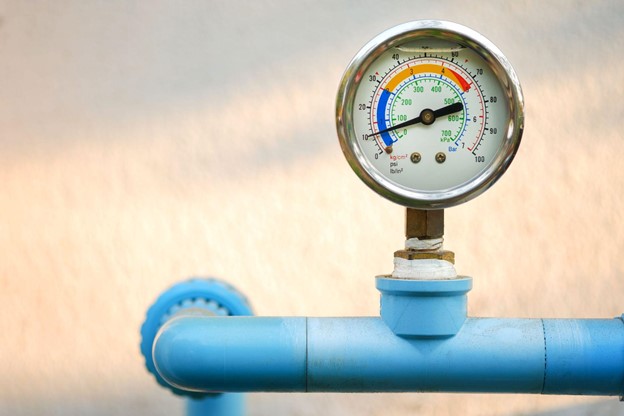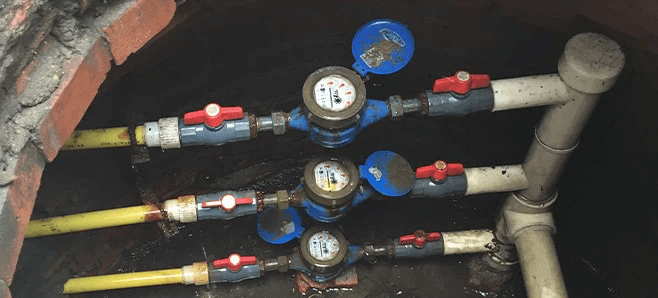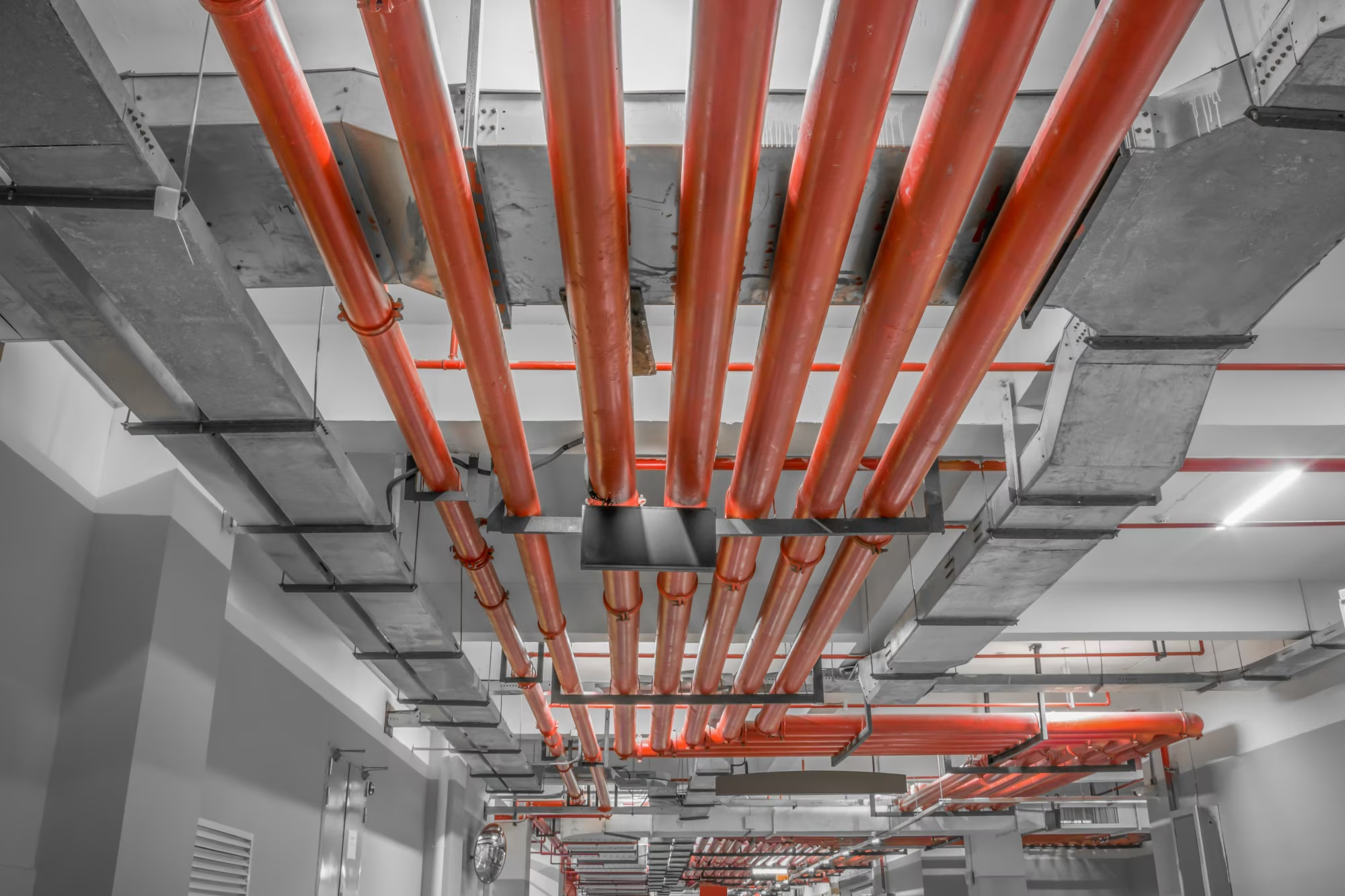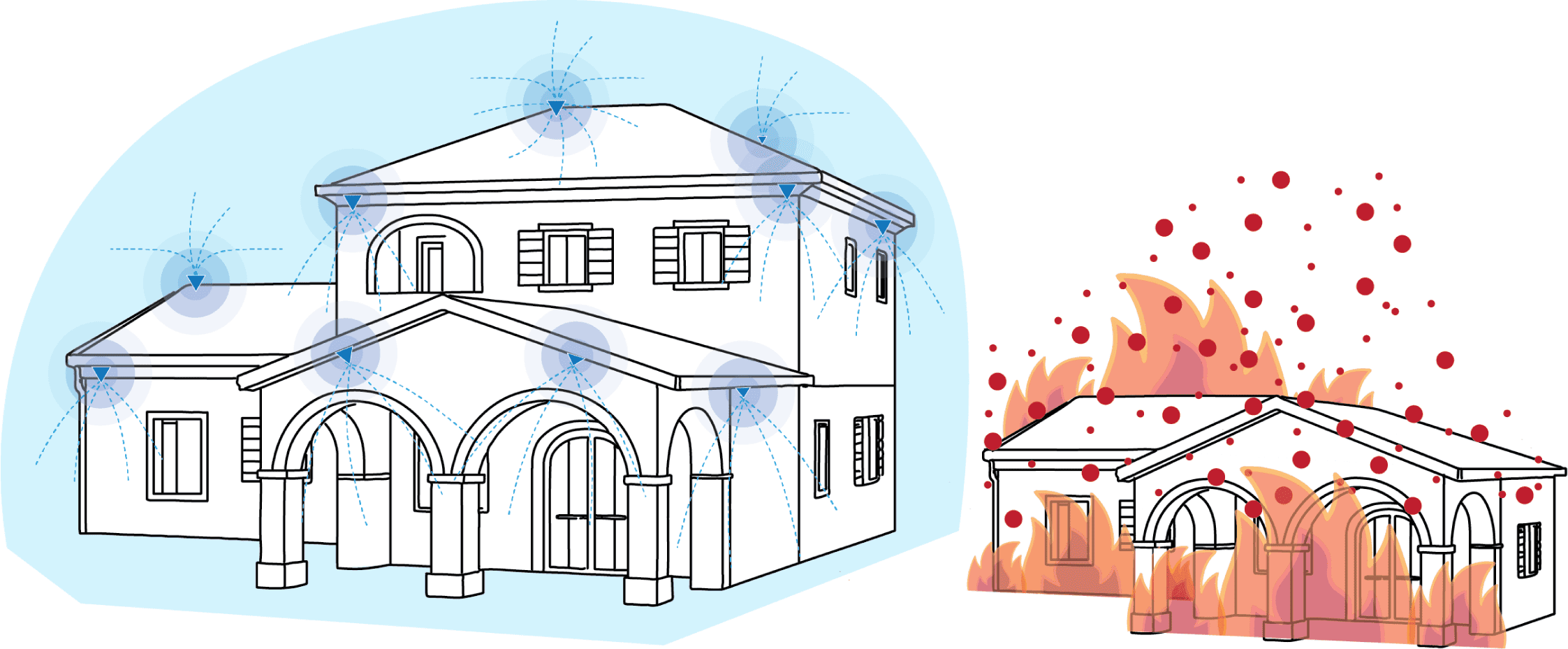Water Supply for Residential Fire Sprinkler Systems
A common question homeowners and architects have when considering a fire sprinkler system is: “How much water will it need?“
As with many engineering questions, the answer is: “It depends.“
- A two-story, 2,000-square-foot home in Central Valley, California may require 31 gallons per minute (gpm) at 50 psi over a 10-minute period.
- A single-story, 1,000-square-foot home near Las Vegas, Nevada may only require 16 gpm at 30 psi over 7 minutes.
- A 5,000-square-foot custom estate in the California High Sierra with steep ceilings may require 50 gpm at 80 psi over 30 minutes.
This article will discuss how factors like home size, location, and pressure impact water flow needs to ensure effective fire protection for residential homes.
Key Metrics for Water Supply
Three primary metrics define the water supply needed for a residential fire sprinkler system:
- Flow capacity – measured in gallons per minute (gpm).
- Water pressure – measured in pounds per square inch (psi).
- Duration – measured in minutes.

Photo Credit: AdobeStock
Flow Capacity
Most residential fire sprinkler systems are designed to support two simultaneously operating sprinklers (per NFPA 13D 10.2.1).
- Standard residential sprinklers require 13 gpm each, resulting in a total sprinkler flow of 26 gpm.
- Certain states, such as California, also mandate an additional 5 gpm to account for domestic water usage (e.g., showers, dishwashers, sinks). This results in a total requirement of 31 gpm for a typical system in California.
However, if low-flow residential fire sprinklers are used, each may only require 8 gpm, reducing the total requirement to 16 gpm (or 21 gpm in California).
Larger homes with custom architectural features that don’t meet the “normal” situations described in NFPA 13D 10.2.1 may be required to support three or four sprinklers at once, increasing the water flow requirement to the range of 40 – 55 gpm (or more in some cases).
Additionally, local jurisdictions (e.g., San Francisco) may require a higher domestic water flow allowance, further increasing the total water demand.
Water Pressure
The water pressure available at the water source must be sufficient to ensure proper operation of the most remote sprinkler in the system. Pressure requirements increase based on:
- House height – Taller homes require more pressure to push water to upper floors.
- Piping length – Larger homes have longer pipe runs, increasing pressure loss.
- Antifreeze systems – Require a reduced pressure backflow device, which adds 15 psi of pressure loss.
- Water meter size – A 1-inch meter may cause 4 psi of pressure loss, while a ¾-inch meter can lose 20 psi or more.
- Underground municipal supply piping size – The short stretch of pipe between a municipal water main and the water meter can have a big impact on the water supply. The smaller the diameter of this underground water supply pipe, the greater the pressure loss experienced in this stretch. This pipe diameter is usually dictated by the municipal water district.
- House elevation – A house situated at the top of a hill will need greater pressure to push water up the slope
The final required pressure at the water source can range from 40 psi on the low end to 100 psi or more for larger, taller homes with antifreeze systems.
Water Supply Duration
If the sprinkler system is connected to a municipal water supply, duration is not a concern since the water flow is assumed to be available indefinitely.
However, homes relying on wells or water storage tanks must have enough water available for the required duration:
Standard homes require 10 minutes of water supply (e.g., 31 gpm x 10 min = 310 gallons) per NFPA 13D §6.1.2.
A residential fire sprinkler system is a life safety system. The system provides protection to the occupants for enough time for them to safely exit the house. It has been determined that 10 minutes is sufficient for occupants to egress the house, even when being woken up from sleep.
There are two situations where a reduction in water supply storage is permissible:
- Smaller, single-story homes (<2,000 sq ft) only require 7 minutes (13D §6.1.3).
- If a well supplies part of the system’s water, the storage tank only needs to make up the difference (e.g., a well providing 12 gpm in a house needing 26 gpm for 10 min would require a supplemental 140-gallon tank).
On the other hand, certain fire department jurisdictions may require larger water supply durations, possibly as long as 30 minutes.
Types of Water Supply Sources
Residential fire sprinkler systems are typically supplied by one of three sources:
- Municipal Water Connection (most common)
- No duration concerns.
- May require a booster pump if pressure is insufficient.
- Onsite Well
- Only strong wells can directly supply fire sprinklers.
- Most wells require a storage tank and pump.
- Onsite Water Storage Tank + Pump
- Needed when neither city water nor a strong well is available.
- Requires careful planning to ensure enough stored water.

Photo Credit: sh-meters.comsh-meters.com
Typical Well and Storage Tank Setups
Two common configurations exist for homes relying on wells and storage tanks:
- Single Large Storage Tank
- Well and submersible pump fill a large tank (usually 500+ gallons).
- A separate pump draws water from the tank for both domestic and sprinkler use.
- A pressure tank can optionally be added to the domestic system to minimize the frequency the pump needs to operate.
- Dedicated Fire Sprinkler Storage Tank
- The well water line immediately splits into two lines: one for domestic water (via an optional pressure tank), and the other for a dedicated fire sprinkler tank (250-350 gallons).
- This setup is preferred when homeowners want to limit stored water for non-sprinkler use.
The choice between these two setups depends on how much domestic water storage the homeowner wants.



